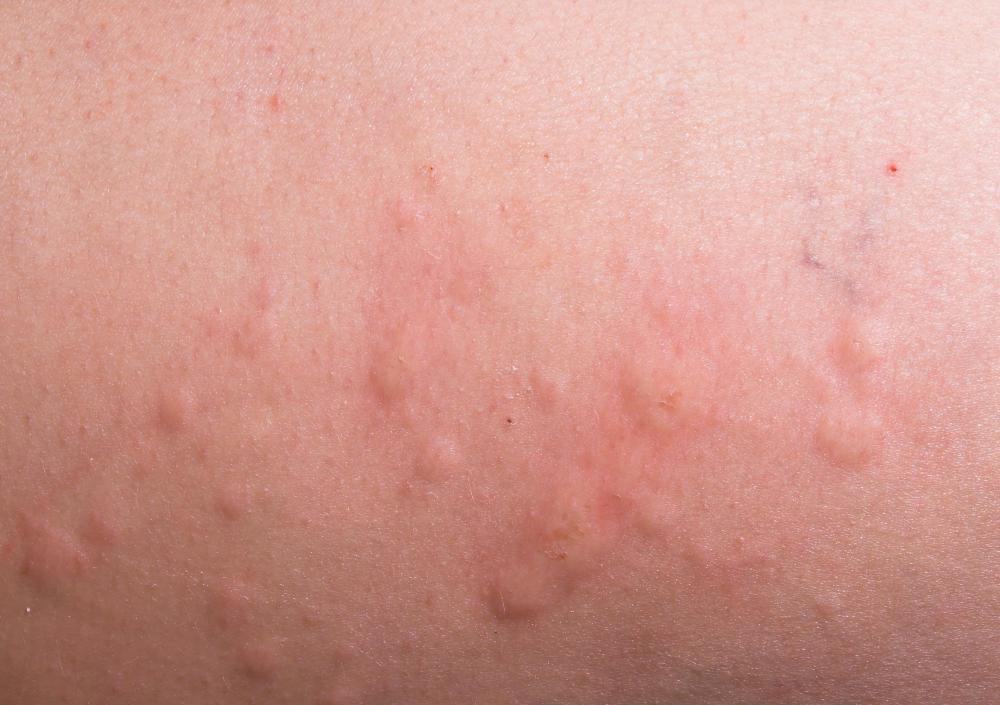At HomeQuestionsAnswered, we're committed to delivering accurate, trustworthy information. Our expert-authored content is rigorously fact-checked and sourced from credible authorities. Discover how we uphold the highest standards in providing you with reliable knowledge.
What is a Trumpet Vine?
A trumpet vine, or Campsis radicans for the formally inclined, is a flowering vine native to the Southeastern region of the United States. Contrary to the name, trumpet vines do not actually produce trumpets, in case you're wondering where trumpets come from, but they do put out a plethora of trumpet-shaped flowers in the spring and summer. Gardeners have a love it or hate it relationship with the trumpet vine, with some people loving this showy flowering plant, while others loathe it.
Trumpet vines are woody climbing vines with ovate leaves. The leaves start out a pale green, becoming darker over time, and the distinctive flowers may be red, orange, yellow, or cream, classically with pale throats. In the fall, the plant produces an array of hanging seed pods. Butterflies and birds cannot resist a trumpet vine in full flower, and trumpet vines also provide habitat for many bird and insect species in their densely interlaced branches and leaves.

Some gardeners struggle with trumpet vines because in the right climate, these plants can become out of control. In fact, some people classify them as invasive, because they grow very rapidly, and their sprawling tendrils can rip the siding off a house, destroy a fence, or promote rot in trellises, garden gates, and fenceposts. Once established, a trumpet vine is very difficult to eradicate, and gardeners should think carefully before planting a trumpet vine.

These vines grow in USDA zones four through 10, preferring full sun, loose fertile soil, and mild winters. In warm climates with good soil, a trumpet vine can run amok, but there are some ways to control a trumpet vine so that its ornamental nature can be enjoyed without becoming a hassle. One solution is to grow the plant in containers, restricting the spread of the roots and the size of the plant. Trumpet vines can also be aggressively pruned in the spring to inhibit new growth, and they should be grown on standalone trellises, rather than being trained to climb structures or fences, so that they cannot damage walls and fences.
Gardeners should be careful around trumpet vines because these plants have another hidden surprise in addition to being extremely vigorous: their milky sap causes contact dermatitis in some people. While not everyone will react to trumpet vine sap, some people develop itching, rashes, and hives just from brushing up against the leaves, let alone exposing themselves to sap from freshly cut branches.
AS FEATURED ON:
AS FEATURED ON:












Discussion Comments
I remember the orange trumpet vine from my childhood. I lived in a wooded area, and this vine grew wild on the side of the road.
It was hanging among some trees. The flowers were reddish-orange and so bright amongst the green leaves.
I saw my very first hummingbird hovering around the trumpet vine. The bird itself was brightly colored, and it made for a stunning mental image. That's probably why I remembered it for all these years.
@Kristee – Yes, it can be harmful, especially if they eat a lot of it. Smaller animals are probably even more prone to the toxic effects, since it doesn't take as much to poison them.
My friend has this huge yellow angel trumpet vine growing in her yard. The flowers are over a foot long! I believe it is a giant variety.
She told me that it is poisonous to animals. Does anyone know if this is true of all trumpet vines?
My friend doesn't have any pets, but I have four dogs, and my neighbor has cats. I don't want to put them in any danger by planting something that is toxic to them. They are all fairly curious animals.
I moved to my new neighborhood in the fall, so I saw trumpet vine seed pods before I saw the actual flowers. I thought that the vine was some sort of bean plant!
So, I was surprised to see the orange flowers the next year. They just weren't what I expected to see on something that produced giant bean-like pods!
Post your comments